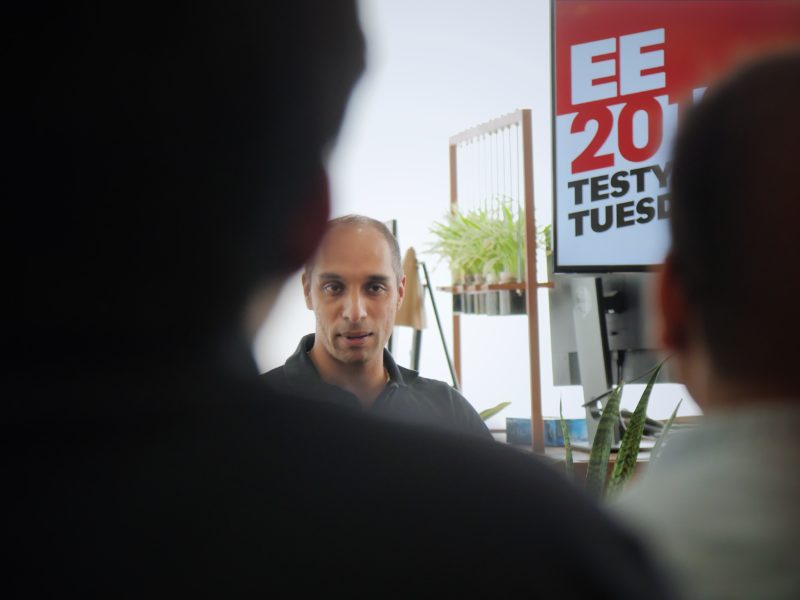A lot of folks in the valley recently seem to be realizing the potential of Indian startups when it comes to fully capturing the local market and expanding fiercely into rest of APAC and beyond. We thought why not have the 8 EE finalists hear from one of the front runners who’s done both: the man behind the company used by 400+ brands (including Walmart, Pizza Hut, Starbucks) touching 300M+ consumers daily in 30+ countries – Aneesh Reddy, co-founder and CEO, Capillary Technologies. As Capillary celebrates its 10th anniversary this year, safe to say that Aneesh has had a front-row seat to the evolution of the startup ecosystem in India, especially when it comes to e-commerce and retail. The session was a great combination of no BS straight-talk in how to scale, what are the mistakes to avoid, etc while also being reflective in its tone on how Aneesh himself as evolved as a founder. We’ve outlined the key takeaways from the session below. Hope you find it useful!

Growth vs profitability: Finding the right balance
“If you have money in the bank, profitability is an after-thought, and rightly so. You are not going to build a billion-dollar company by cutting costs.”
Traditionally, most Indian businesses have been about generating cash for the founders and their families. But we have a new model at our disposal now, where you raise capital to scale much faster. Of course, you need to make sure there aren’t any structural issues with your unit economics. For instance, make sure your gross margins are not too low. While product and sales expenditures are in your control, it is very hard to fix gross margins.
International Expansion: Learn to walk before you can run
“Having money in the bank can do funny things to you. At Capillary, we opened up almost ten of countries at once in 2012/13. Eventually, we had to shut several locations down (UK, US, Australia, South Africa, Hong Kong), and concentrate on a select few markets”, said Aneesh candidly. It is very important to stay focused and choose wisely.
Aneesh also urged founders to think hard about maximizing their home opportunity before expanding internationally. “We thought about investing methodically in sales, or mapping the Indian market out almost 4 years too late”, said Aneesh. Diversifying geographic footprint may take your eye off the ball, and keep you from realizing full potential in your core market.
For Capillary, delighting multinational customers like Pizza Hut and Puma in India was the gateway to international expansion. The team realized that making minor tweaks to the existing product sufficed in the Singaporean market (and paid 4x+ of India!). The good thing about Asia is that decision-making for most countries is run through a common office (in Singapore, Dubai etc.) and once you’ve cracked the solution in one country, it makes it much easier to scale elsewhere. India and APAC are also more forgiving markets in general in terms of product maturity, whereas in the west, product quality needs to be much higher and you’re held to a 3-strike rule (3 mistakes and you’re out).
For Indian companies expanding to the US, Aneesh’s advice was that one of the co-founders move there. While Indian enterprise customers are very ROI driven, the west is very consultative and needs high touch support. Great product is pretty much table-stakes; it’s really sales & marketing that will help you win!

Culture: Don’t be a bully
The first 20 people you hire will determine how the company does. As they lead different functions, they will be the ones setting the organizational culture. A lot of the initial hires might be people you know from before, and hence early on, it’s easier to have a relatively flat structure.
However, when you’re a young 20-something founder whose company is growing many-fold and raising millions of dollars of capital, it’s hard to dissociate from this sense of achievement. In such situations, you wouldn’t even realize and a collaborative culture would’ve transformed into one where you’re talking and giving instructions 80% of the time. Aneesh recalled a phase in his own journey where his co-founder and many others in the company began to feel he had become a bit of a bully. It is always useful to seek external help in such cases, like getting an executive coach. Also try to get a few senior, experienced people in the firm, if you can, because a bit of adult supervision at the right time can be a gamechanger for a young company.
Take the time to think and plan
“The power of planning is immense. A lot of mistakes can be avoided if you just step back on a regular basis and take the time to think. Maybe spend one full day in the week planning your growth.”
Growth planning is especially important for enterprise startups, where your sales teams will always have capacity limits. Since sales hiring cycles tend to be long (up to 9 months), you have to start thinking well in advance. In consumer companies, there will always be ploys (like discounting) that can show immediate results. This also jives with what we learned from our session with Bipul last week.
Get a high-quality board together
“As entrepreneurs, we don’t know what we don’t know. We need someone to sit us down and tell us things.”
Aneesh thinks of the ideal board as a combination of financial investors and operators. You need financial investors who believe in you to support in times of need. Operators who have built or worked at large companies in the past start adding more and more value on the board as you scale the company. In Capillary’s example, Aneesh now has India’s top specialists in enterprise sales, operations and company building on his board, and he relies heavily on them for all sorts of advice.

Thank you for reading. To stay updated, follow EE on twitter here and the official Lightspeed India handle here.

